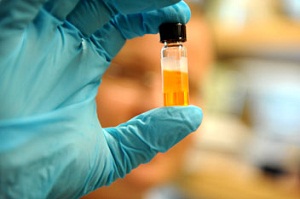Electric glue could become heir apparent to photovoltaics
 Shrink Nanotechnologies, Inc. acquired an exclusive license for electronic glue developed at the University of Chicago by Assistant Professor of Chemistry, Dmitri Talapin. The glue could replace other, less-efficient semiconductors used in photovoltaics and other devices, like computer chips, light-emitting diodes and medical devices.
Shrink Nanotechnologies, Inc. acquired an exclusive license for electronic glue developed at the University of Chicago by Assistant Professor of Chemistry, Dmitri Talapin. The glue could replace other, less-efficient semiconductors used in photovoltaics and other devices, like computer chips, light-emitting diodes and medical devices.
At present most commercial photovoltaics, computer chips and other semiconductor-based technologies, use large semiconductor crystals, such as silicon, according to Shrink. The materials and the processes used to manufacture them are expensive and can make large-scale applications such as rooftop solar-energy collectors cost prohibitive.
A possible alternative is semiconductor nanocrystals. Which, according to Shrink, “are very good receptors of light which could be converted to electricity (in the case of a solar cell).”
But the collection of electrical charges from individual semiconductor nanocrystals cannot be accomplished efficiently using existing technologies because the semiconductor nanocrystals themselves are not great "carriers" of the electricity produced by the light they receive.
“This is replacing the silicon,” said Shrink CEO Mark Baum. “It would allow you print down a semiconductor nanocrystal and create tunable solar cells that can be printed-down,” he said.
Tunable solar cells could be made to respond to wider ranges of light radiation, or multiple bands of solar radiation, whereas silicon-based photovoltaics are greatly limited in the range of light which they can respond to.
The glue allows nanocrystals to transfer electricity more effectively between nanocrystals. They previously were not able to transfer electricity because surface ligands (bulky, insulating organic materials created as a byproduct of the nanocrystal creation process) made it difficult to easily transfer electricity among nanocrystals.
The electronic glue being developed avoids that problem by replacing the ligands with conductive inorganic molecules that more effectively serve as semiconductors for the nanocrystals, allowing for the transfer of electricity.
The technology isn’t ready to take over the photovoltaic market yet, Baum said.
“We’re going to develop out the technology and spend the next 12 to 18 months to put together a low-cost technology [for depositing the electronic glue],” he said.
Such a technology would allow manufacturers of devices to deposit the electric glue at lower temperatures.
Currently making semiconductor materials for nanophotovoltaics requires high temperatures and an expensive process, he said.
“It would be a different way to do what they’re trying to do with a lot less sophisticated process,” he said.
Image courtesy of University of Chicago.



